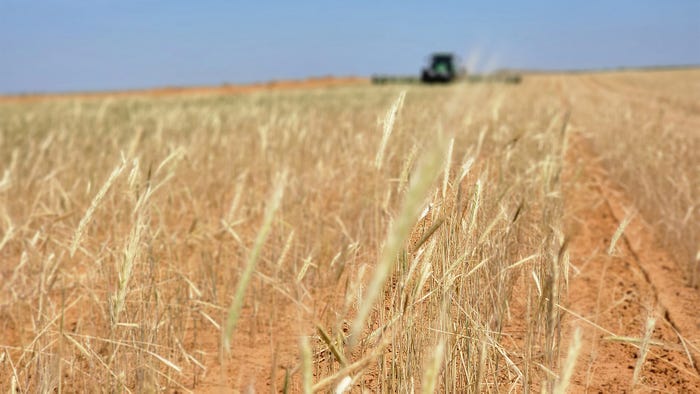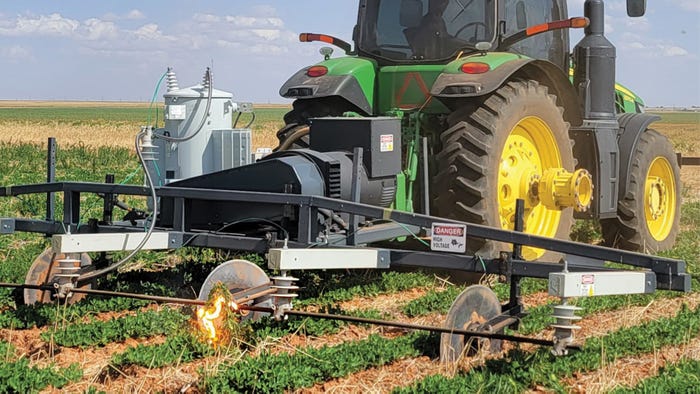
Soil moisture conditions are much improved over 2023 as Texas and Oklahoma peanut farmers start planting the 2024 crop.
“Conditions are a lot better than last year at this time,” says Oklahoma State University Integrated Pest Management Specialist Maxwell Smith, Altus.
“Last year, West Texas had received half of an inch of rain from January through April,” says Texas AgriLife Extension agronomist Emi Kimura, Vernon. “This year, according to data from the weather station at Brownfield, we’ve had 2.5 inches.
“That’s much better,” Kimura says. “I still want to see more rain, but this is much better.”
The Texas Rolling Plains and other peanut-growing areas also have better soil moisture prospects. “It was raining last night (May 1) in the Rolling Plains, and the forecast in the West Texas, Seminole area shows they are expecting more rain this weekend.”

Planting peanuts into a rye cover crop on John Reddecop's farm, near Plains, Texas. Reddecop was the 2023 Farm Press Peanut Efficiency Award winner. (Photo by Shelley E. Huguley)
In Southwest Oklahoma, around Altus, Tillman County, Harmon County, and Greer County, they received a good rain May1, Smith says. “So, producers down in Tillman County probably will have some pretty good moisture when they start planting.”
He says a good part of the peanut production area has missed a few rains. “If you pull up the soil moisture map, there's a circle through the region where most of our peanuts are grown. Moisture there is less than the surrounding areas.”
Time to plant
Where producers received recent rain, Kimura expects once fields dry out, they’ll be busy.
“They're going to be planting a lot,” she says. “Many of them have already started.”
Some Oklahoma producers told Smith they are already “dropping seeds in the ground. It just depends on where they are in the peanut growing region, whether the moisture is good or not. Some growers had to run pivots and pre-water to get enough moisture.”
Soil temperatures
Kimura advises producers to check soil temperatures before they plant. “Optimum soil temperature for peanut germination is at least 68 degree for three consecutive days. And that needs to be without a cold front forecast, so seed can germinate quickly.”

Weatherford, Oklahoma, producer and 2022 Farm Press Peanut Efficiency Award winner Karl Stutzman checks his peanut seed depth. Specialists remind growers that with better moisture comes more weed potential. (Photo by Shelley E. Huguley)
Slow germination leaves the seed vulnerable. “One year the soil temperature was kind of cold and the seed was just sitting. The longer the seed is just sitting in the soil, the higher the chance that the seed gets damaged by pests, which can result in skippy stands. We do not want to see that.”
West Texas is in good shape, she says. “The seven-day average soil temperature is above 74. Some years, even in the first week of May, soil temperature does not reach the ideal point. This year, the soil temperature is good to go in West Texas. The Rolling Plains’ soil temperature is still around 67 degrees in that seven-day average.”
In Oklahoma, as of April 30, the 4-inch soil temperature reading was around 65 degrees, “top to bottom on the west side of the state,” Smith says.
“So, we’re in pretty good shape for peanuts and close to pulling the trigger on cotton.”
He says the typical planting window for peanuts is
from the last few days of April into the first 10 days of May.
Early weed pressure
Improved moisture benefits peanuts but also increases the threat of weed pressure, Kimura says.
“I'm seeing high pressure in the field. Based on research, the first nine weeks after planting is a critical window for peanuts to maintain high yield potential. For the first nine weeks, peanuts need to be very clean. That's true for both grassy and broadleaf weeds.”
Smith says he’s seen some early weed pressure but not significantly more than usual. He says warmer temperatures rather than moisture seem to have favored early weed growth.
“I have seen quite a few kochia over the last two months, and I’ve seen some Palmer pigweed. I wouldn't say moisture is different from last year at this point. Last year we had pretty good moisture going into planting season. We just dried up about halfway through.
“We’re kind of sitting in the same spot, good moisture to plant. It's what happens after planting that will make the difference.”
About the Author(s)
You May Also Like







